Development and Validation of an Algorithm for the Digitization of ECG Paper Images
Abstract
1. Introduction
2. Materials and Methods
- Normal sinus rhythm: the rhythm of a healthy heart. It means the electrical impulse from the sinus node is properly transmitted [14].
- Bradycardia: the presence of a slow or irregular heartbeat, less than 60 beats per minute [15].
- Tachycardia: the increase in the number of heartbeats per minute (heart rate) under resting conditions (more than 100 beats per minute) [16].
- Acute Pericarditis: the inflammation of the pericardium characterized by an accumulation of fluids in the pericardial space [17].
- Atrial Fibrillation: rapid and disorganized atrial activation leading to an impaired atrial function [18].
- Atrial Flutter: heart failure when the electrical activity in the atria is coordinated. The atria contract at a much-increased rate (more than 240 beats per minute) [19].
- Muscle tremor artifact: a type of movement artifact. It usually happens because the patient is trembling.
- Breath artifact: a typical artifact caused by patient breathing [20].
- Premature Atrial Contractions (PACs): a common cardiac dysrhythmia characterized by premature heartbeats in the atria [21].
- Premature Ventricular Contractions (PVCs): single ventricular impulses caused by abnormal automatism of the ventricular cells or by the presence of re-entry circuits in the ventricle [22].
- Supra Ventricular Tachycardia: the high-rate heart rhythm originating above the ventricle [23].
- Ventricular Tachycardia: the hyperkinetic arrhythmia characterized by a high ventricular rate [24].
2.1. The Digitization Algorithm
2.2. Algorithm Validation Technique
2.2.1. Similarity
2.2.2. Repeatability
2.2.3. Reproducibility
3. Results
3.1. Similarity
3.2. Repeatability
3.3. Reproducibility
4. Discussion
5. Conclusions
Author Contributions
Funding
Institutional Review Board Statement
Informed Consent Statement
Data Availability Statement
Conflicts of Interest
References
- Mishra, S.; Khatwani, G.; Patil, R.; Sapariya, D.; Shah, V.; Parmar, D.; Dinesh, S.; Prathamesh, D.; Mehendale, N. ECG Paper Record Digitization and Diagnosis Using Deep Learning. J. Med. Biol. Eng. 2021, 41, 422–432. [Google Scholar] [CrossRef]
- Cirrincione; Giansalvo; Randazzo, V.; Pasero, E. A neural based comparative analysis for feature ex-traction from ECG signals. In Neural Approaches to Dynamics of Signal Exchanges; Springer: Singapore, 2020; pp. 247–256. [Google Scholar] [CrossRef]
- Sannino, G.; De Pietro, G. A Deep Learning Approach for ECG-Based Heartbeat Classification for Arrhythmia Detection. Future Gener. Comput. Syst. 2018, 86, 446–455. [Google Scholar] [CrossRef]
- Badilini, F.; Erdem, T.; Zareba, W.; Moss, A.J. ECGScan: A Method for Conversion of Paper Electrocardiographic Printouts to Digital Electrocardiographic Files. J. Electrocardiol. 2005, 38, 310–318. [Google Scholar] [CrossRef] [PubMed]
- Schimpf, R.; Wolpert, C.; Gaita, F.; Giustetto, C.; Borggrefe, M. Short QT Syndrome. Cardiovasc. Res. 2005, 67, 357–366. [Google Scholar] [CrossRef]
- Giustetto, C.; Scrocco, C.; Schimpf, R.; Maury, P.; Mazzanti, A.; Levetto, M.; Anttonen, O.; Dalmasso, P.; Cerrato, N.; Gribaudo, E.; et al. Usefulness of Exercise Test in the Diagnosis of Short QT Syndrome. EP Eur. 2015, 17, 628–634. [Google Scholar] [CrossRef] [PubMed]
- Patil, R.; Karandikar, R. Image Digitization of Discontinuous and Degraded Electrocardiogram Paper Records Using an Entropy-Based Bit Plane Slicing Algorithm. J. Electrocardiol. 2018, 51, 707–713. [Google Scholar] [CrossRef] [PubMed]
- Chebil, J.; Al-Nabulsi, J.; Al-Maitah, M. A Novel Method for Digitizing Standard ECG Papers. In Proceedings of the International Conference on Computer and Communication Engineering 2008, ICCCE08: Global Links for Human Development, Kuala Lumpur, Malaysia, 13–15 May 2008; pp. 1308–1312. [Google Scholar] [CrossRef]
- Shrivastava, P.R.K.; Panbude, S.; Narayanan, G. Digitization of ECG Paper Records Using MATLAB. Int. J. Innov. Technol. Explor. Eng. (IJITEE) 2014, 4, 2278–3075. [Google Scholar]
- Randazzo, V.; Ferretti, J.; Pasero, E. Anytime ECG Monitoring through the Use of a Low-Cost, User-Friendly, Wearable Device. Sensors 2021, 21, 6036. [Google Scholar] [CrossRef]
- Randazzo, V.; Ferretti, J.; Pasero, E. A Wearable Smart Device to Monitor Multiple Vital Parameters—VITAL ECG. Electronics 2020, 9, 300. [Google Scholar] [CrossRef]
- Woś, M.; Kłosowski, G.; Wójcik, D.; Rymarczyk, T. A Complete System for an Automated ECG Diagnosis. Przegląd Elektrotechniczny 2021, 97, 162–165. [Google Scholar] [CrossRef]
- GE Healthcare MAC 2000 ECG Analysis System Operator’s Manual. Available online: https://www.numed.co.uk/files/uploads/Product/MAC2000%20Operators%20Manual.pdf (accessed on 11 September 2022).
- Spodick, D.H. Normal Sinus Heart Rate: Appropriate Rate Thresholds for Sinus Tachycardia and Bradycardia. South. Med. J. 1996, 89, 666–667. [Google Scholar] [CrossRef] [PubMed]
- Sidhu, S.; Marine, J.E. Evaluating and Managing Bradycardia. Trends Cardiovasc. Med. 2020, 30, 265–272. [Google Scholar] [CrossRef] [PubMed]
- Gopinathannair, R.; Olshansky, B. Management of Tachycardia. F1000Prime Rep. 2015, 7. [Google Scholar] [CrossRef] [PubMed]
- Ismail, T.F. Acute Pericarditis: Update on Diagnosis and Management. Clin. Med. 2020, 20, 48. [Google Scholar] [CrossRef] [PubMed]
- Pellman, J.; Sheikh, F. Atrial Fibrillation: Mechanisms, Therapeutics, and Future Directions. Compr. Physiol. 2015, 5, 649. [Google Scholar]
- Cosío, F.G. Atrial Flutter, Typical and Atypical: A Review. Arrhythmia Electrophysiol. Rev. 2017, 6, 55. [Google Scholar] [CrossRef]
- Littmann, L.; Rennyson, S.L.; Wall, B.P.; Parker, J.M. Significance of Respiratory Artifact in the Electrocardiogram. Am. J. Cardiol. 2008, 102, 1090–1096. [Google Scholar] [CrossRef]
- Durmaz, E.; Ikitimur, B.; Kilickiran Avci, B.; Atıcı, A.; Yurtseven, E.; Tokdil, H.; Ebren, C.; Polat, F.; Karaca, O.; Karadag, B.; et al. The Clinical Significance of Premature Atrial Contractions: How Frequent Should They Become Predictive of New-Onset Atrial Fibrillation. Ann. Noninvasive Electrocardiol. 2020, 25, e12718. [Google Scholar] [CrossRef]
- Kim, N.J.; Lee, S.J.; Atala, A. Biomedical Nanomaterials in Tissue Engineering. In Nanomaterials in Tissue Engineering: Fabrication and Applications; Elsevier Ltd.: Amsterdam, The Netherlands, 2013; pp. 1–25e. ISBN 9780857095961. [Google Scholar]
- Williams, S.E.; O’Neill, M.; Kotadia, I.D. Supraventricular Tachycardia: An Overview of Diagnosis and Management. Clin. Med. 2020, 20, 43. [Google Scholar] [CrossRef]
- Koplan, B.A.; Stevenson, W.G. Ventricular Tachycardia and Sudden Cardiac Death; Elsevier: Amsterdam, The Netherlands, 2009. [Google Scholar]
- Ecg-Kit-File Exchange-MATLAB Central. Available online: https://it.mathworks.com/matlabcentral/fileexchange/50769-ecg-kit (accessed on 30 September 2021).
- Benesty, J.; Chen, J.; Huang, Y.; Cohen, I. Pearson Correlation Coefficient. Springer Top. Signal Processing 2009, 2, 1–4. [Google Scholar] [CrossRef]
- Kryger, M.H.; Roth, T.; Dement, W.C. Book Review: Principles and Practice of Sleep Medicine Fifth Edition. Korean J. Otorhinolaryngol.-Head Neck Surg. 2011, 54, 660. [Google Scholar] [CrossRef]
- Narayan, R. Encyclopedia of Biomedical Engineering; Elsevier: Amsterdam, The Netherlands, 2018. [Google Scholar]
- Postema, P.G.; Wilde, A.A.M. The Measurement of the QT Interval. Curr. Cardiol. Rev. 2014, 10, 287–294. [Google Scholar] [CrossRef] [PubMed]
- Toman, O.; Hnatkova, K.; Smetana, P.; Huster, K.M.; Šišáková, M.; Barthel, P.; Novotný, T.; Schmidt, G.; Malik, M. Physiologic Heart Rate Dependency of the PQ Interval and Its Sex Differences. Sci. Rep. 2020, 10, 1–17. [Google Scholar] [CrossRef] [PubMed]
- Chen, L.Y.; Soliman, E.Z. P Wave Indices—Advancing Our Understanding of Atrial Fibrillation-Related Cardiovascular Outcomes. Front. Cardiovasc. Med. 2019, 6, 53. [Google Scholar] [CrossRef]
- Silva, D.A.S.; De Lima, T.R.; Tremblay, M.S. Association between Resting Heart Rate and Health-Related Physical Fitness in Brazilian Adolescents. BioMed Res. Int. 2018, 2018, 3812197. [Google Scholar] [CrossRef]
- Sheugh, L.; Alizadeh, S.H. A Note on Pearson Correlation Coefficient as a Metric of Similarity in Recommender System. In Proceedings of the 2015 AI & Robotics (IRANOPEN), Qazvin, Iran, 12 April 2015. [Google Scholar]
- Bland, J.M.; Altman, D.G. Measurement Error and Correlation Coefficients. BMJ Br. Med. J. 1996, 313, 41. [Google Scholar] [CrossRef] [PubMed]
- He, X.; Goubran, R.A.; Liu, X.P. Evaluation of the Correlation between Blood Pressure and Pulse Transit Time. In Proceedings of the MeMeA 2013-IEEE International Symposium on Medical Measurements and Applications, Gatineau, Quebec, Canada, 4–5 May 2013; pp. 17–20. [Google Scholar]
- Mingers, J. Combining IS Research Methods: Towards a Pluralist Methodology. Inf. Syst. Res. 2001, 12, 240–259. [Google Scholar] [CrossRef]
- Khattree, R. Ch. 22. Repeatability, Reproducibility and Interlaboratory Studies. Handb. Stat. 2003, 22, 795–822. [Google Scholar] [CrossRef]
- Tsang, E.W.K.; Kwan, K.M. Replication and Theory Development in Organizational Science: A Critical Realist Perspective. Acad. Manag. Rev. 1999, 24, 759–780. [Google Scholar] [CrossRef]
- Stupple, A.; Singerman, D.; Celi, L.A. The Reproducibility Crisis in the Age of Digital Medicine. NPJ Digit. Med. 2019, 2, 1–3. [Google Scholar] [CrossRef]

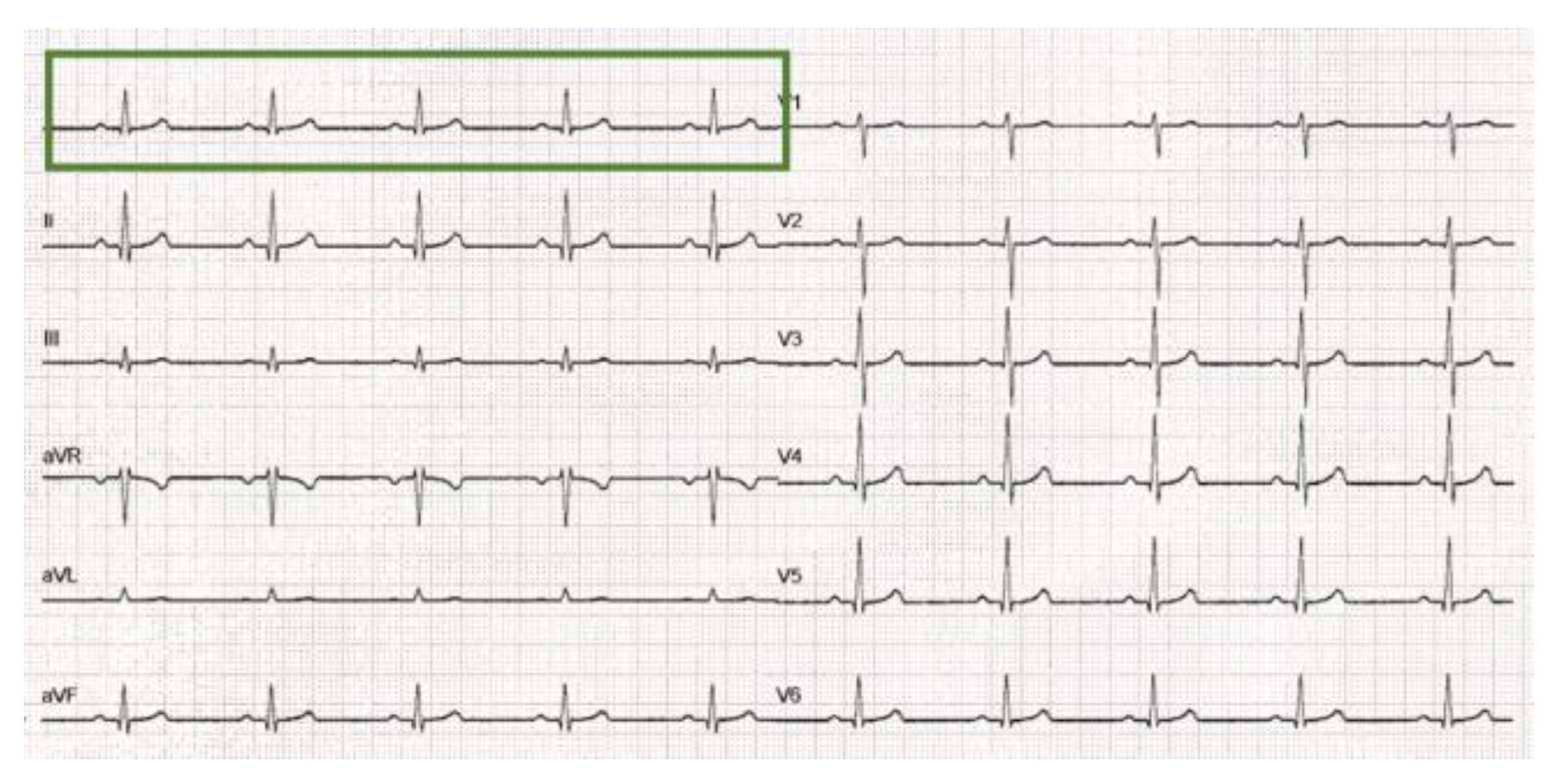
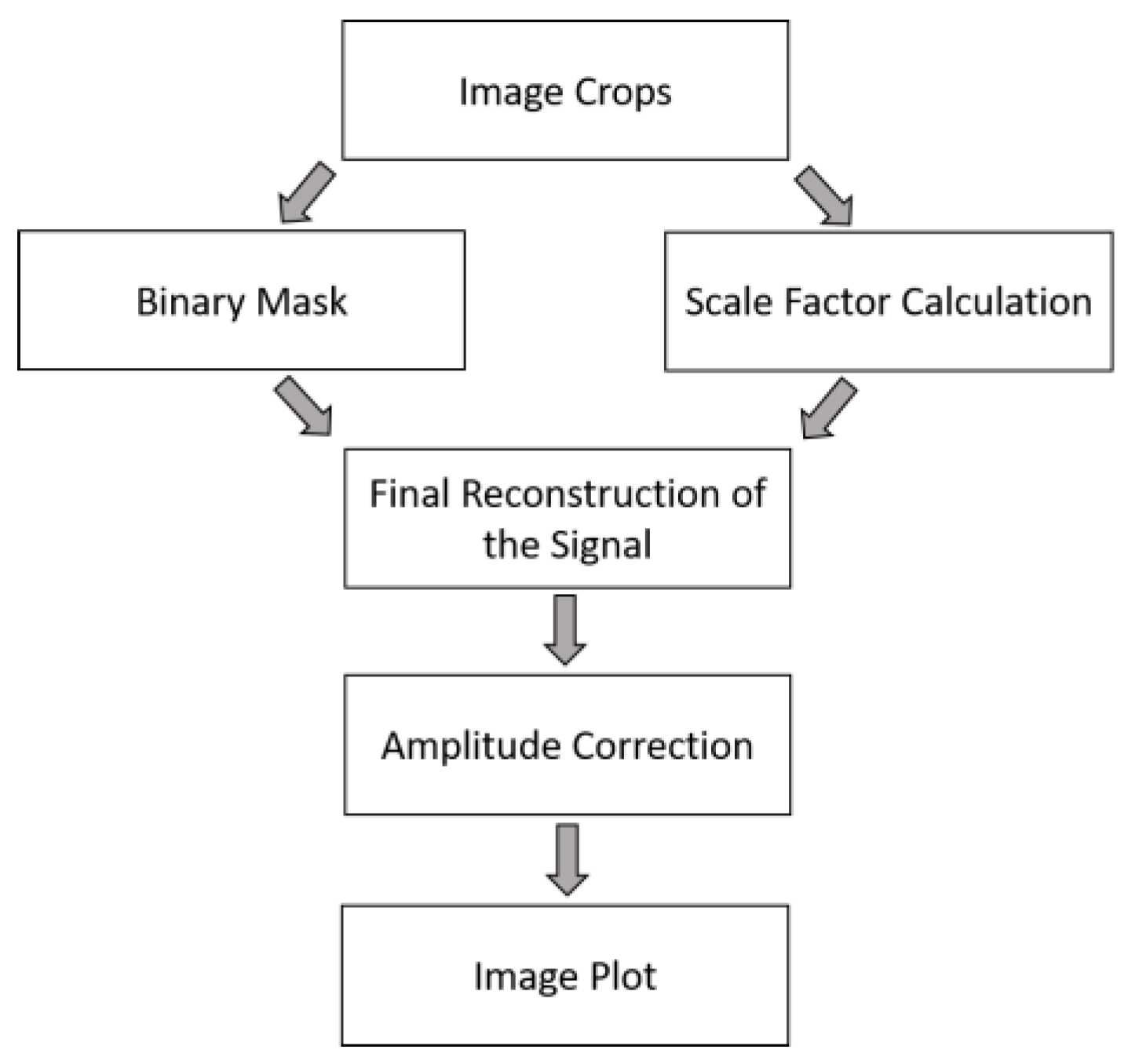




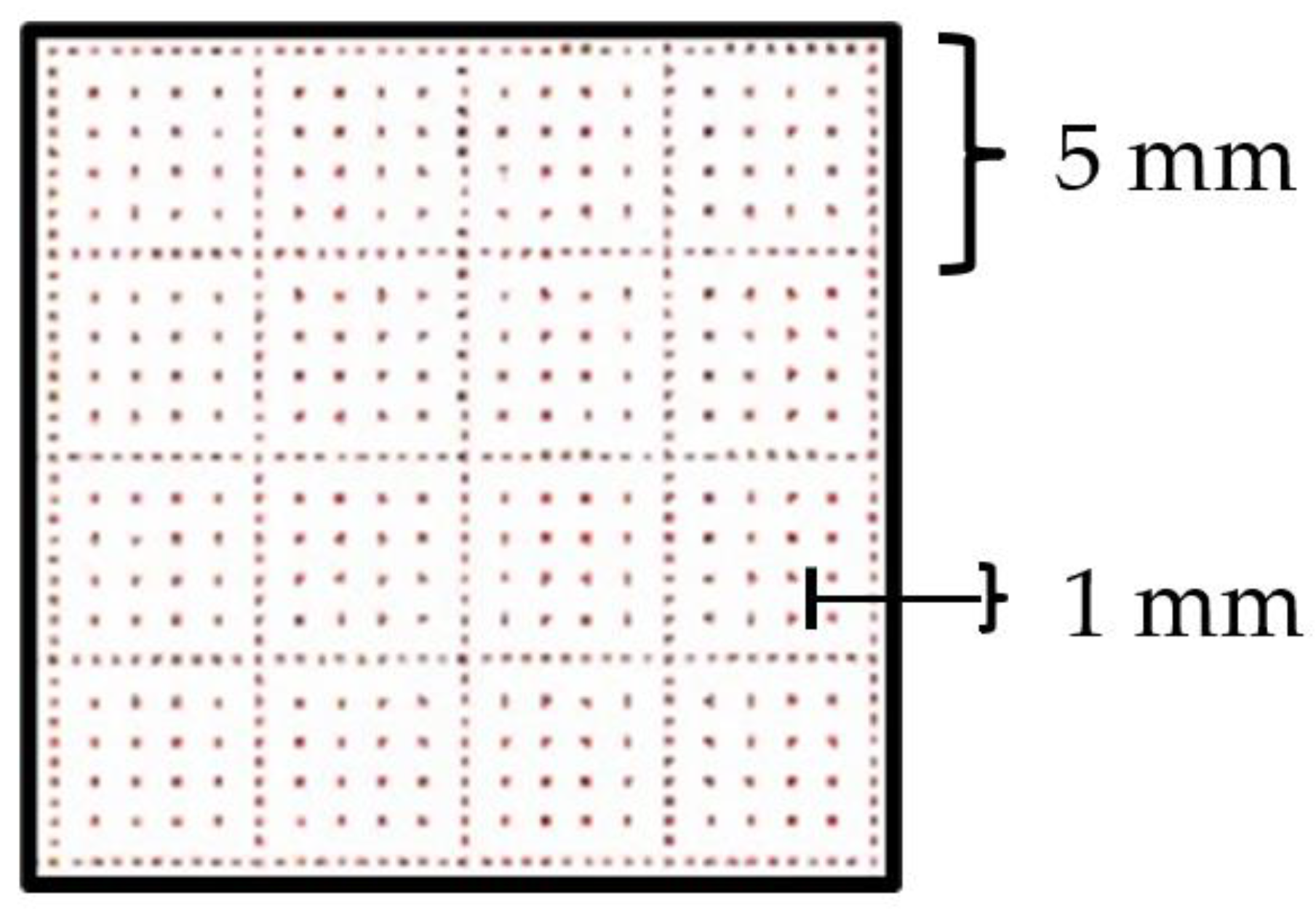
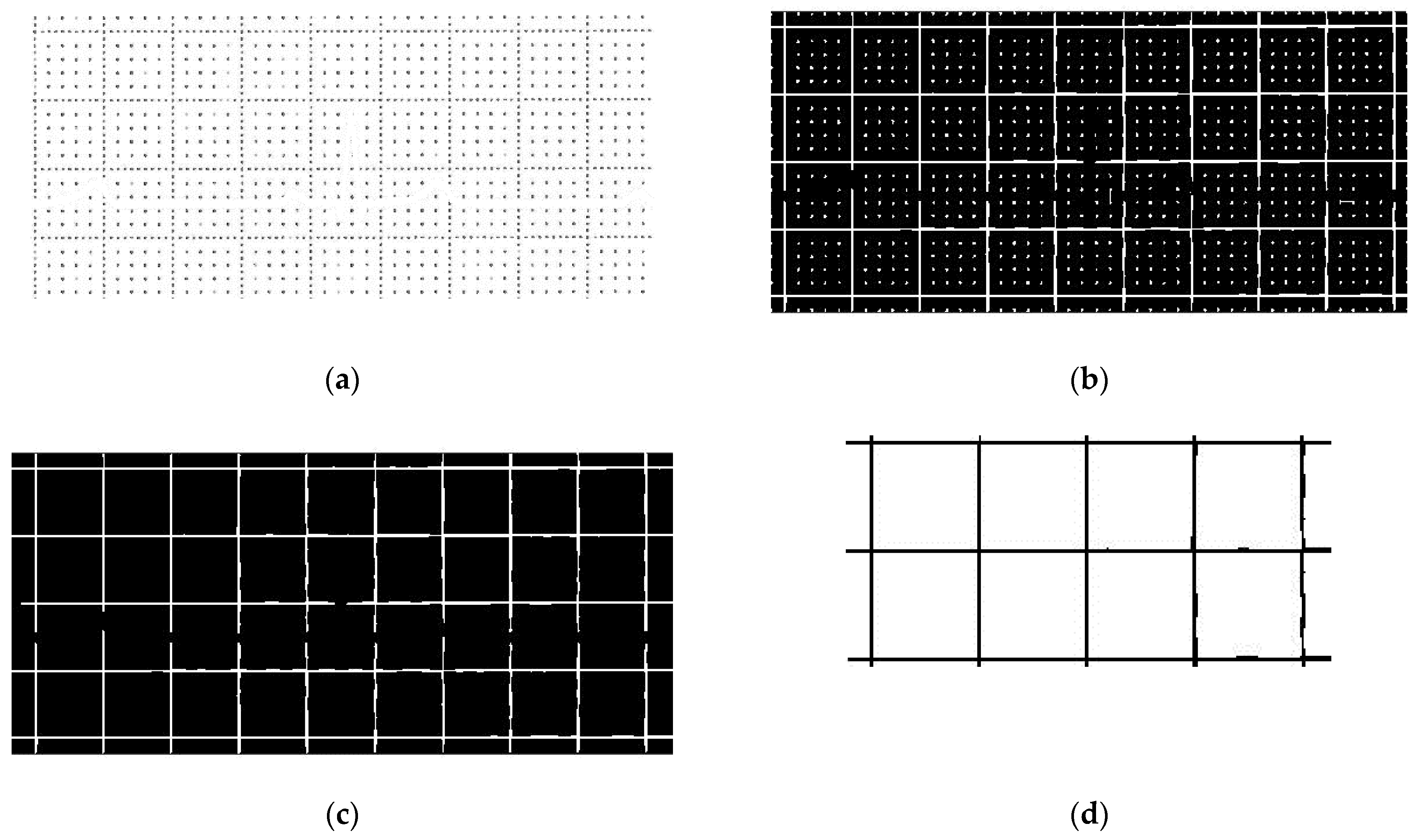





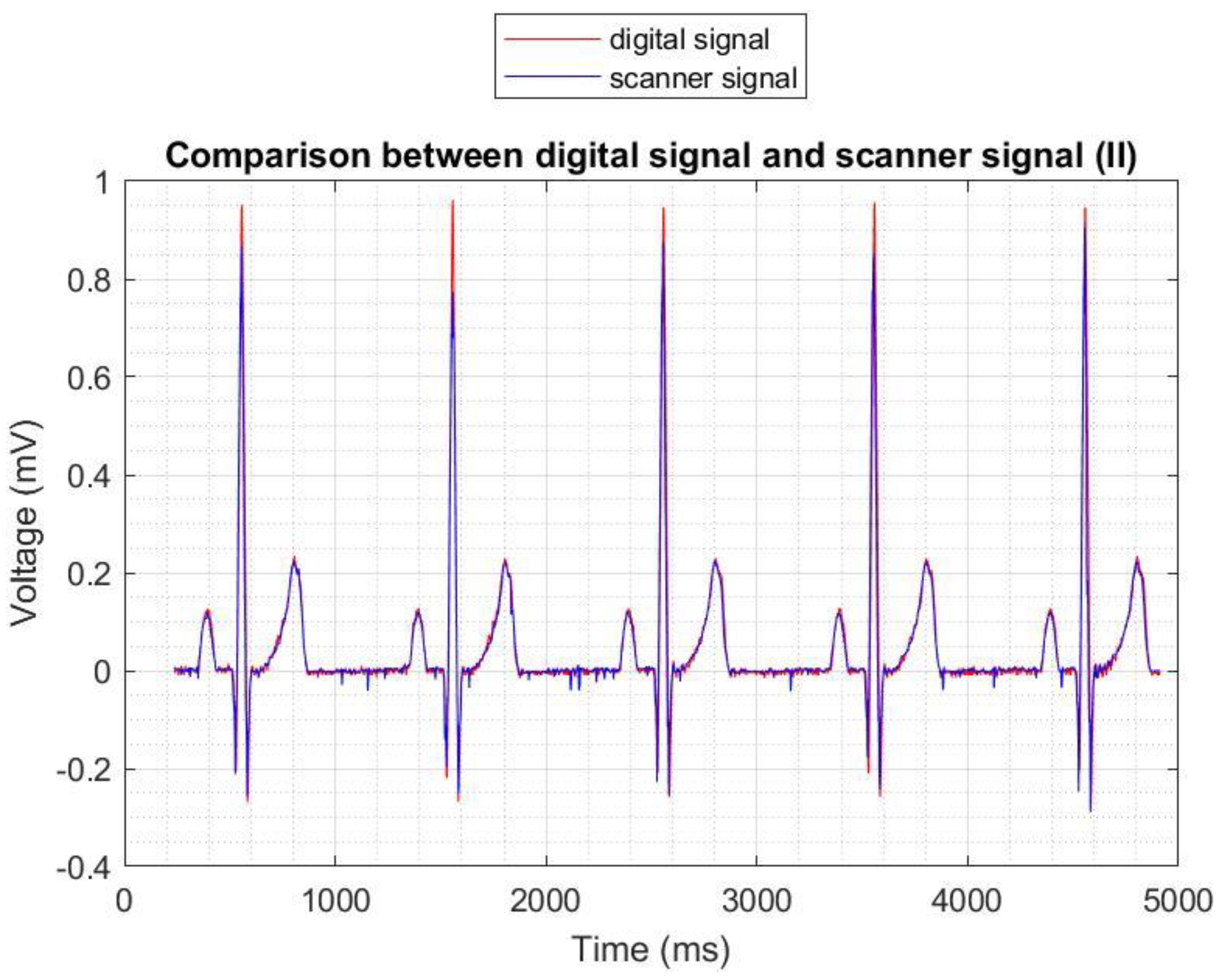
| HR (bpm) | Clinical Condition | Amplitude (mV) | ST Elevation (mV) |
|---|---|---|---|
| 30 | Bradycardia | 1 | 0 |
| 45 | Bradycardia | 1 | 0 |
| 60 | Normal sinus rhythm | 0.5 | 0 |
| 60 | Normal sinus rhythm | 1 | 1 |
| 60 | Normal sinus rhythm | 1 | 0.5 |
| 80 | Acute Pericarditis | 1 | 0.2 |
| 100 | Normal sinus rhythm | 1 | 1 |
| 120 | Sinus Tachycardia | 1 | 1 |
| 76 | Atrial Fibrillation | 1 | 1 |
| 82 | Atrial Flutter | 1 | 1 |
| 60 | Breath artifact | 1 | 1 |
| 60 | Muscle artifact | 1 | 1 |
| 75 | Premature Atrial Contractions (PACs) | 1 | 1 |
| 78 | Premature Ventricular Contractions (PVCs) | 1 | 1 |
| 200 | Supra Ventricular Tachycardia | 1 | 1 |
| 152 | Ventricular Fibrillation | 1 | 1 |
| HR (bpm) | Condition | Amplitude (mV) | ST Elevation (mV) | Pearson Coefficient |
|---|---|---|---|---|
| 30 | Bradycardia | 1 | 0 | 0.8798 |
| 45 | Bradycardia | 1 | 0 | 0.9448 |
| 60 | Normal sinus rhythm | 0.5 | 0 | 0.9255 |
| 60 | Normal sinus rhythm | 1 | 1 | 0.9434 |
| 60 | Normal sinus rhythm | 1 | 0.5 | 0.9821 |
| 80 | Acute pericarditis | 1 | 0.2 | 0.9145 |
| 100 | Normal sinus rhythm | 1 | 1 | 0.9147 |
| 120 | Sinus tachycardia | 1 | 1 | 0.9459 |
| 76 | Atrial fibrillation | 1 | 1 | 0.9245 |
| 82 | Atrial flutter | 1 | 1 | 0.9118 |
| 60 | Breath artifact | 1 | 1 | 0.9684 |
| 60 | Muscle artifact | 1 | 1 | 0.9085 |
| 75 | Premature Atrial Contractions (PACs) | 1 | 1 | 0.9300 |
| 78 | Premature Ventricular Contractions (PVCs) | 1 | 1 | 0.9134 |
| 200 | Supra ventricular tachycardia | 1 | 1 | 0.9236 |
| 152 | Ventricular fibrillation | 1 | 1 | 0.9852 |
| SF (mm/Pixel) | QRS Complex (ms) | QT Interval (ms) | PQ Interval (ms) | P-Wave Duration (ms) | R-R Peaks (ms) | Heart Rate (bpm) | |
|---|---|---|---|---|---|---|---|
| Test 1 | 0.042829 | 96.51 | 360.33 | 183.21 | 108.50 | 1008.62 | 59.49 |
| Test 2 | 0.043802 | 98.70 | 368.52 | 187.47 | 110.96 | 1031.53 | 58.17 |
| Test 3 | 0.042374 | 110.17 | 375.72 | 163.28 | 106.78 | 997.49 | 60.15 |
| Test 4 | 0.043552 | 113.82 | 386.75 | 167.24 | 109.75 | 1025.52 | 58.52 |
| Test 5 | 0.042838 | 97.10 | 361.55 | 182.21 | 108.52 | 1008.84 | 59.47 |
| Test 6 | 0.043690 | 113.59 | 387.39 | 168.35 | 110.10 | 1028.46 | 58.34 |
| Test 7 | 0.042555 | 95.89 | 358.03 | 182.14 | 107.81 | 1002.18 | 59.87 |
| Test 8 | 0.042388 | 110.77 | 376.41 | 162.77 | 106.82 | 999.78 | 60.13 |
| Test 9 | 0.042932 | 96.74 | 361.41 | 183.75 | 108.76 | 1011.05 | 59.34 |
| Test 10 | 0.042833 | 96.51 | 360.35 | 183.31 | 108.50 | 1008.65 | 59.49 |
| Mean | 0.043000 | 102.98 | 369.65 | 176.38 | 108.75 | 1012.18 | 59.30 |
| SD | 0.000524 | 7.95 | 11.22 | 9.69 | 1.34 | 12.09 | 0.72 |
| Range | 0.014000 | 17.93 | 29.36 | 24.70 | 4.18 | 34.04 | 1.98 |
| True Value | - | 88 | 368 | 164 | 86 | 1000 | 60 |
| Parameters | True Value | JPEG Image (1st Version) | Absolute Error 1 | JPEG Image (2nd Version) | Absolute Error 2 |
|---|---|---|---|---|---|
| SF (mm/pixel) | - | 0.042285 | - | 0.172516 | - |
| QRS complex (ms) | 88 | 110.51 | 22.51 | 101.21 | 13.21 |
| QT interval (ms) | 368 | 375.49 | 7.49 | 368.04 | 0.04 |
| PQ interval (ms) | 164 | 162.38 | 1.62 | 163.32 | 0.68 |
| P-wave duration (ms) | 86 | 106.56 | 20.56 | 89.71 | 3.71 |
| R-R peak distance (ms) | 1000 | 995.40 | 4.60 | 1017.85 | 17.85 |
| Heart Rate (bpm) | 60 | 60.28 | 0.28 | 58.95 | 1.05 |
Publisher’s Note: MDPI stays neutral with regard to jurisdictional claims in published maps and institutional affiliations. |
© 2022 by the authors. Licensee MDPI, Basel, Switzerland. This article is an open access article distributed under the terms and conditions of the Creative Commons Attribution (CC BY) license (https://creativecommons.org/licenses/by/4.0/).
Share and Cite
Randazzo, V.; Puleo, E.; Paviglianiti, A.; Vallan, A.; Pasero, E. Development and Validation of an Algorithm for the Digitization of ECG Paper Images. Sensors 2022, 22, 7138. https://doi.org/10.3390/s22197138
Randazzo V, Puleo E, Paviglianiti A, Vallan A, Pasero E. Development and Validation of an Algorithm for the Digitization of ECG Paper Images. Sensors. 2022; 22(19):7138. https://doi.org/10.3390/s22197138
Chicago/Turabian StyleRandazzo, Vincenzo, Edoardo Puleo, Annunziata Paviglianiti, Alberto Vallan, and Eros Pasero. 2022. "Development and Validation of an Algorithm for the Digitization of ECG Paper Images" Sensors 22, no. 19: 7138. https://doi.org/10.3390/s22197138
APA StyleRandazzo, V., Puleo, E., Paviglianiti, A., Vallan, A., & Pasero, E. (2022). Development and Validation of an Algorithm for the Digitization of ECG Paper Images. Sensors, 22(19), 7138. https://doi.org/10.3390/s22197138








